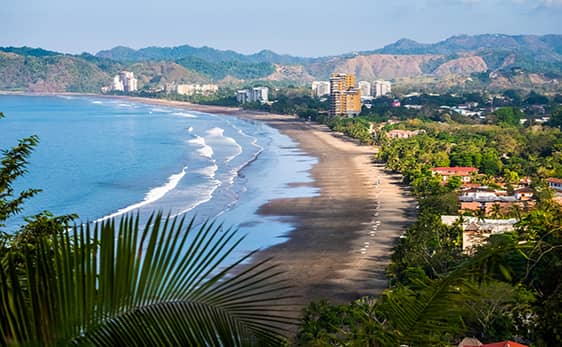Jacó, Costa Rica: Our Detailed Guide To This Booming Beach Town
By Lou Kritz
Say it’s a beach trip, and your tico friend chuckles, “Oh, you’re going to Jacó!” A quaint country village until the late 20th century, Jacó is now the go-to place for most ticos, tourists, and expats. The 1,000 Huetares, an indigenous group that live on the reserves in Quitirrisí and Zapatón, began what is now the Jacó settlement a millennium ago.
There is a unique synergy in play. It’s the story of cooperation among major capital investors, a government striving for environmentally positive results, and local inhabitants willing to work together to see a dream fulfilled.
Jacó is located on the Pacific coast of Costa Rica, southwest of San José, about an hour’s drive from the capital. Officially created on September 16, 1965, the town of Jacó, with its two-and-a-half-mile beach, rests between Herradura Bay to the north and Playa Hermosa to the south.
Costa Rican natives, ticos, live for holidays at the beach. Jacó, the nearest beach destination from the Central Valley, where 70% of the country’s population resides, benefits greatly from its location, activities, and amenities. To say it is “packed” on a national holiday can seem like a huge understatement.
Only 23 feet above sea level, the residents and visitors enjoy the seashore climate. It’s hot and humid, with refreshing breezes from the Pacific creating conditions that beachgoers and surfers love.
Development in Jacó, Costa Rica

Historically, Jacó was something of a hidden haven. From the time of Columbus in 1502 until the early 1990s it was a place of slow development, and the ticos’ favorite secret spot for a relaxing getaway. Late in the last century Canadian tour groups found the town. Then came the surfers to the crashing waves of the Pacific. Soon, retiring expats woke up to Jacó’s pleasant assets. The town was growing, but without major resources to fuel the growth.
Finally, William Royster cruised his private boat into Herradura Bay. He saw the massive potential of the beautiful beachfront property of Costa Rica. After the country’s terrible 1991 earthquake, he purchased 1,100 acres of the land around Herradura Bay, just north of the town of Jacó. His foresight created the Los Sueños Resort and Marina Master Plan that would change the surrounding area for the better.
Cooperating with the national government to create a concept that was ecologically feasible while maintaining economic strength, the Los Sueños project was designated as a program of national interest. The Costa Rican first Marina Law was enacted based on the principles of Royster’s planning group. While planning for the total project commenced, the staff began a reforestation program that reclaimed 200 acres of the forest that had been destroyed by vigorous cattle farming, bringing back many displaced native species of wildlife.
The Los Sueños project included 550 luxury residences, and work continues on 450 more, a large 200-slip marina, and a luxury resort hotel, in addition to ongoing reforestation work. The project also includes the 6,700-yard, executive-level golf course, considered one of the best of Costa Rica’s 12 courses. The whole development has drawn local residents into the construction efforts, thereby providing jobs and income. The marina has attracted not only private boaters and fishermen, but also entrepreneurs who provide billfishery cruises for vacationers.
Since 2001, the growing project has gotten the attention of entrepreneurs and hotel and attraction developers, and Jacó has become the premier beach resort in Costa Rica. As vacation and tourist attractions have profitably increased, so too has the permanent residency of both the town and surrounding areas, and housing options range from the luxury accommodation of Los Sueños to moderately priced choices for all income levels.
Retire in Jacó, Costa Rica
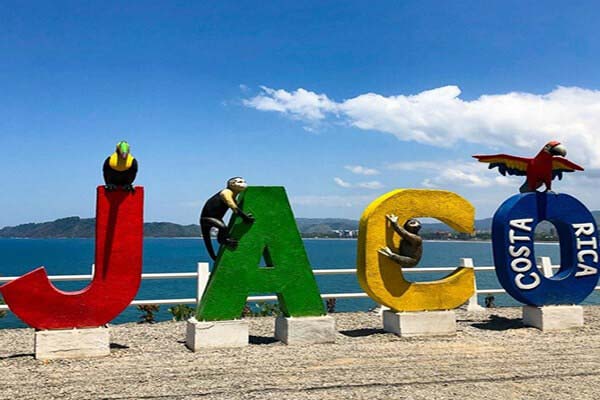
No one place can tick each item on your retirement wish list, but Jacó comes very close. This city offers everything from laid-back, dozing solitude to partying into the wee hours, all enjoyed in a “bright lights” town setting, a cool beach, or in the wilds of eco-friendly natural areas. Then, if you want big-city excitement, Costa Rica’s capital and largest city is less than an hour away.
At sea level on the Pacific coast, the warmth and tropical humidity are ameliorated by the pleasant Pacific breezes. Daytime temperatures range between 75 F and 90 F, and nighttime temperatures stay between 75 F and 79 F. There are two seasons, with temperatures remaining the same. The dry season lasts from December to late April, and rainy season is May through November.
Another big concern for retirees is medical care, and Jacó has you covered. Located in the middle of town is the CAJA Ebais. CAJA is the acronym of the government-backed healthcare system, and Ebais is the local clinic with pharmacy services. Hospital care and specialist services are available in San José at one of the six hospitals. There are also private doctors and clinics in town if you prefer their care over the government system. The private medical community generally accepts the insurance provided by several different companies.
Shopping in Jacó is a fun experience. Basic necessities, such as food and clothing, are provided by many stores, including the top Costa Rican supermarkets, and clothing and accessory stores range from specialized independents to chains that are well represented in town. There is also an outstanding weekly feria, or farmers’ market, selling locally grown and produced fruits, vegetables, meats, seafood, and all the highest quality produce.
Choose housing options from luxury condos and homes in Los Sueños to moderately priced condos and homes in Jacó and the countryside. Rentals of all stripes can be found in most neighborhoods. An interesting option for the “snowbirds” who wish to spend the U.S. winters in the warmth of the shore and the summers back in the U.S. is to rent your unoccupied property to vacationers and short-term visitors. You can do this on your own, or there are real estate agencies that specialize in short-term letting that can do this.
For transportation, Jacó benefits from Costa Rica’s infrastructure improvement program. By car, most people use Routes 27 and 34, which opened in full in 2005 and 2010, respectively. The roads are modern and multi-lane for quick passages. There are many local and express bus routes between Jacó and San José. Local buses traverse routes between Quepos, Puntarenas, Playa Hermosa, and Uvita, with most running from daybreak to late at night. At the central terminal, it’s very easy to board the bus.
Government-regulated and safe taxis are plentiful for both short around-town routes as well as longer trips to San José and the airports. In town, fares are less than $2, and an airport trip can be $20 to $45. The red taxis with the yellow, numbered triangle are safe and recommended. Unregulated piratas, or pirate taxis, are independents and should be avoided. Many small touring vans travel to San José, the two airports, and towns in the area. They are generally safe and reliable.

Get Your Free Costa Rica Report Here:
Learn more about Costa Rica and other countries in our daily postcard e-letter. Simply enter your email address below and we'll send you a FREE REPORT – Costa Rica: The Land of Pura Vida
This special guide covers real estate, retirement and more in Costa Rica and is yours free when you sign up for our IL postcards below.
Lifestyle in Jacó, Costa Rica
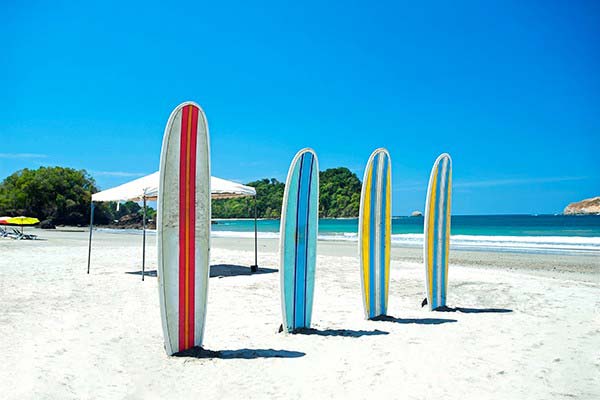
The first word that comes to mind when you decide to live in Jacó is “outdoors.” You have the beach for swimming, surfing, lounging, and billfishing from either the shore or a fishing boat, and, in town, many open-air stores, such as the Jacó Walk, and eateries of all types allow you to enjoy the serenity of the Pacific.
Stunning natural and ecological sites are within less than an hour’s drive, such as four national parks. With a cup of Costa Rica’s finest brew, you can extend your day trip to see a half dozen more.
Dining and entertaining fit right into the party atmosphere all around you. While the 90-mph nightlife may not be your thing, relaxing, open-air dining on a warm, balmy evening with friends, chatting as you listen to the waves breaking across the beach, may just fit the bill.
Socially, you can fit into many facets of a friendly and peaceful community. There is an active and welcoming expat group, as well as conversant ticos who are as interested in getting to know you, as much as you are curious about them.
Safety in this tourist town is not a serious issue. First, the country, in general, is very safe, rated number one in peacefulness out of 12 Central American and Caribbean nations, and number 23 out of 163 worldwide. Jacó’s criminal occurrences revolve around petty crimes, so taking precautions like not flashing a lot of cash and keeping cars locked are advised.
Cost of Living in Jacó, Costa Rica
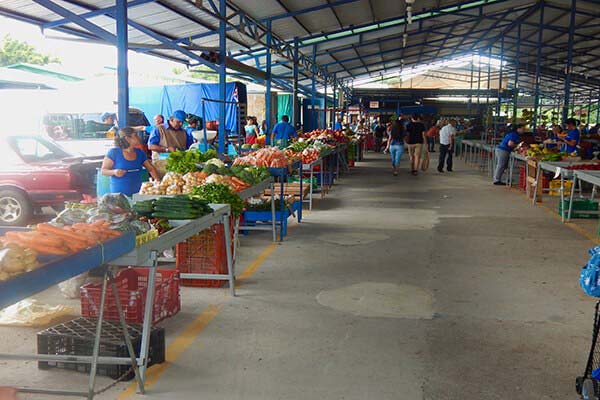
Monthly Budget Breakdown for a Couple in Jacó, Costa Rica:
| Expense | U.S. $ |
| Rent (two-bed, two-bath house, with parking) | $1,275 |
| Utilities (cable, internet) | $200 |
| Cell phones | $35 |
| Groceries | $400 |
| Medical/CAJA | $250 |
| Dining/entertainment | $400 |
| Transportation | $107 |
| Household help & incidentals | $100 |
| Total: | $2,767 |
Notes:
Rent: $1,275 represents an average house on the edge of the downtown area.
Cell phones: Use WhatsApp for local calls, and MagicJack for international calls, and local service on a cash basis, foregoing an unnecessary monthly plan.
Groceries: Rely heavily on the weekly feria market to get the utmost in quality and lowest prices. Fill in with incidental needs (soap, plastics, etc.) at supermarkets.
Medical/CAJA: CAJA is required when you achieve residency, and will cost from $90 to $150, covering both the husband and wife. The balance of $100 is for over-the-counter items and independent medical care, if desired.
Dining/entertainment: The amount stated is based on two top-level dinners, six mid-range meals at a family-level restaurant, and four lunches at the local soda, or corner eatery, all for two people.
Transportation: Foregoing the monthly cost of $600 to $800 for a car, $107 represents two monthly bus trips to San José, six local bus trips to Quepos, etc., and two cab trips. An additional benefit will be the Senior, 65 or over, Gold Card which gets you free local bus rides and at least 50% discounts on mid- and long-range buses.
Choosing Jacó as your retirement home allows you to live in a vibrant community with your choice of amenities, and the chance to live on a realistic retirement budget.
Things to Do in Jacó, Costa Rica
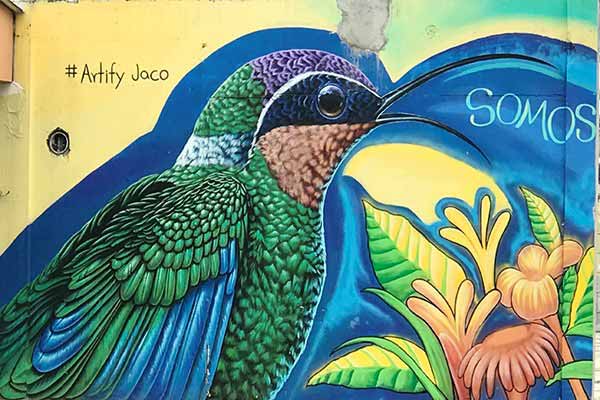
1. Get to Know Los Sueños
The Los Sueños Master Plan spurred the growth of the residence area, beach, marina, sport fishing, golf course, reforestation project, luxury hotel, and the developing ecological park. The Jacó area has benefited so greatly from the continuing activity that you will find ongoing enjoyment in “The Dreams.” Visit often to enjoy the beauty, excitement, and amenities of Jacó.
2. Get Familiar With the Beach
Begin by enjoying the warmth of the sun with the cool splash of the waves. See the surrounding eco-friendly national parks featuring scarlet macaws, crocodiles, and just about every other natural inhabitant. At eventide, relax with a meal and a cocktail under the stars, rest, and do it again tomorrow. The beach is not only a place. It will become your attitude.
3. Start Using all the Benefits
After Los Sueños and Jacó Beach, investigate Playa Herradura. Moor your boat in the luxury marina, sail or kayak, bask in the warm waters. Step onto the Ted Robinson Jr.-designed, 72-hole golf course, the best one in Costa Rica. Then take a parasailing or jet-ski excursion. All day, any day!
4. Explore the Wild Nightlife
Spend some nights on the town, finding your favorite restaurants out of the hundreds available. Any cuisine you yearn for can be found, in several different price categories. Try a French pastry snack, or a gourmet French dinner. Try one of three casinos: There’s Croc’s, Jacópoker, or the Hotel Ampola Casino. Afterwards, stroll the streets past the night-owl clubs and late-night eateries to enjoy another goody before bedtime.
5. It’s Time for School!
Learn to surf, or ride a wakeboard! You’re in the town with shops that not only supply the equipment, but provide classes to help you learn correctly. You can take each sport as far as you like, with the pros’ help.
6. Celebrate, Celebrate, Celebrate
Costa Ricans love to celebrate and they do it often. Your tico friend and his family will include you in their festivities. The most important times are Christmas week and Semana Santa, or Holy Week, right before Easter. These are family get-together times, at the family home, at the beach, or a resort. It’s time for good food, sharing, family values, parades, church processions, and fireworks. Plenty of fireworks!
In Jacó throughout the year, there are festivals, fairs, rodeos, and bullfights, all with music, food, fun, and games. In a Costa Rican bullfight, the bull is not injured or killed. In fact, he often wins the trophy.
7. We all Love Shopping
Jacó gives you fun shopping adventures, chain and independent groceries, and a lively downtown commerce center featuring everything from giftware to lingerie. There are two unique stops in Jacó.
The first is Jacó Walk, an open-air center of over 45 stores that feature medical services, dining spots, household goods, and clothing.
The second is the weekly feria, or farmers’ market, on Friday and Saturday, where local farmers sell fruit, vegetables, honey, cheese, eggs, dairy, meats, and fish, harvested the night before or that morning, and are as fresh as possible. Incredibly reasonable prices for the absolute highest quality found in any retail outlet.
8. Spend a Day in San José
Living less than an hour from the capital city, you can visit top-shelf retail stores of all types. The sights of this thriving city, from the Government buildings and monuments, to parks and museums, will surround you. Spend the night near the Central Promenade, attend a performance at the National Theater, and have a sumptuous gourmet dinner on a one-night getaway.
9. Witness Pacific Central Ecological Wonders
You are within easy driving distance of four of the top national parks in the country. Carara National Park features the largest population of scarlet macaws left in the wild, and hundreds of other bird species. Visit Manuel Antonio National Park and say hello to two-toed and three-toed sloths, four species of monkeys, iguanas, toucans, and many more. La Cangreja National Park has the 3.7-mile Rio Negro hiking trail that showcases waterfalls and quebradas (a ravine, gully, or brook). The fourth is Los Quetzales National Park, with the attraction given away by the name. The park’s most famous and prolific inhabitants are the quetzals, the bright green-and-red tropical birds with long tails and bright decorating colors.
Featured Image Copyright: ©JodiJacobson/iStock

